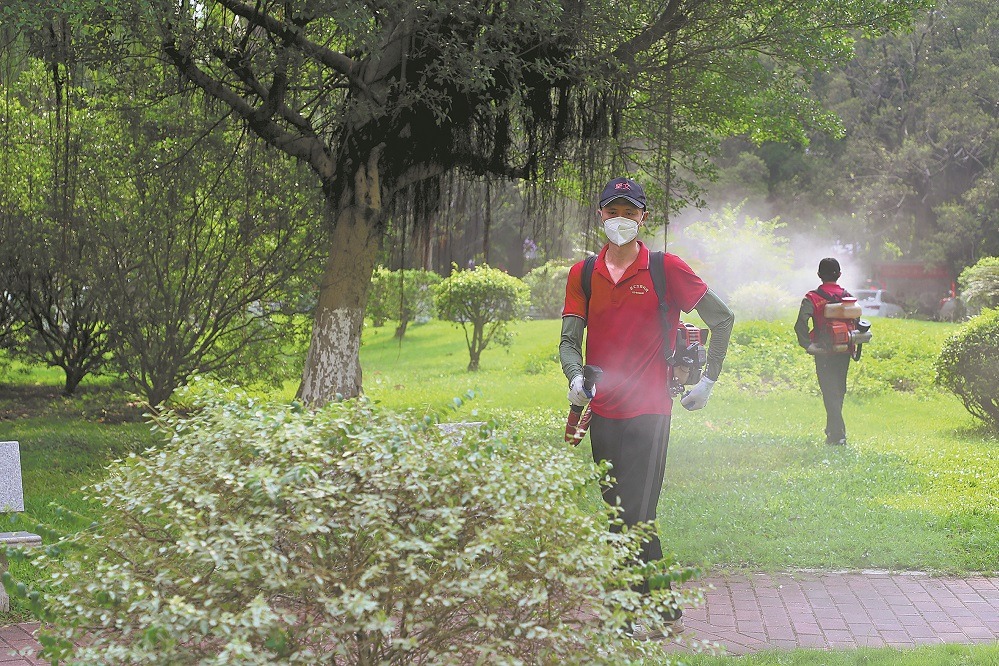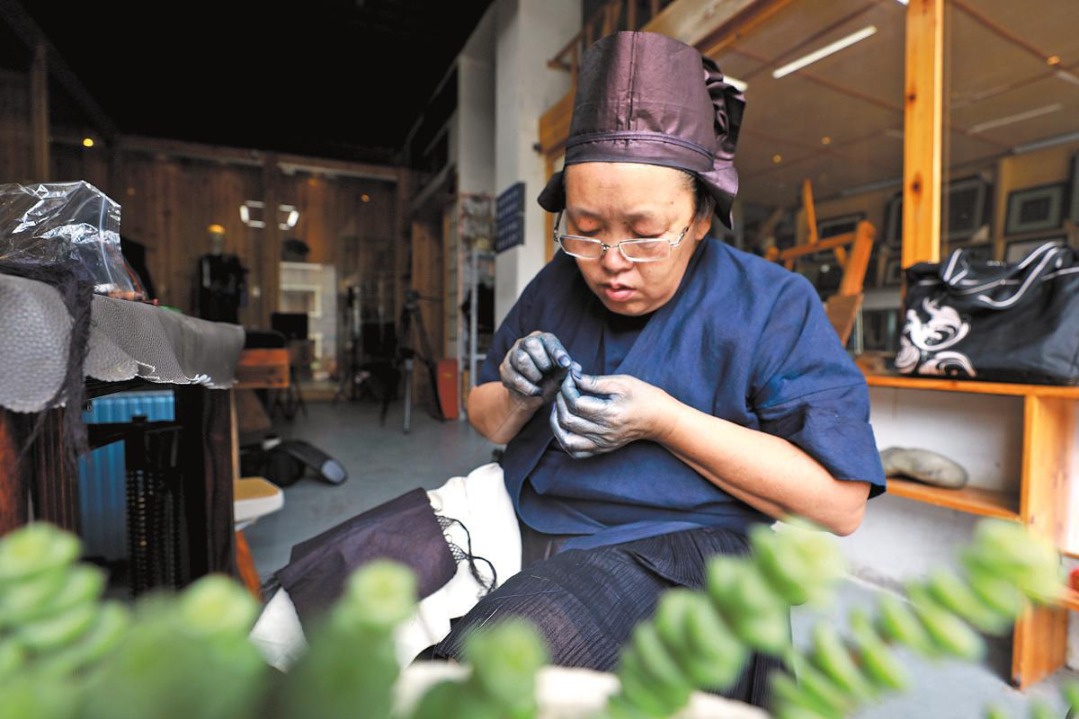Scientists break ground on DNA synthesis
Tianjin University study reveals large genomic sequence constructed and transferred to mice


A recent breakthrough in synthetic biology in Tianjin could pave the way for new treatments for genetic diseases like sickle cell disease and congenital deafness.
A study published in the science methodology journal Nature Methods on July 10 by a team of scientists from Tianjin University claimed to have synthesized a human genome fragment exceeding one million base pairs in length, and successfully transferred it into mice embryos to verify its function.
According to those involved, this achievement marks a significant advancement in human genome synthesis and transfer technology.
The human genome is closely linked to human life, health and disease. Since the completion of the Human Genome Project in 2003, scientists have been trying to synthesize the human genome, but have long struggled with technological bottlenecks.
Over 50 percent of the human genome consists of complex repetitive sequences, posing a considerable challenge to precise synthesis.
"It's like a jigsaw puzzle with millions of pieces, many of which look very similar, making the assembly extremely challenging," said Yuan Yingjin, who led the team.
Yuan, who is also an academician of the Chinese Academy of Sciences and director of the State Key Lab of Synthetic Biology, said that even if long genome fragments are synthesized, validating their genetic function is difficult without transferring them into an animal.
Yuan's team has developed the SynNICE method to tackle this problem.
"Using this method, we have for the first time completed the synthesis of high-repetition human DNA at the million-base-pair level and efficiently transferred this fragment intact into early mice embryos using a yeast nucleus as the transfer shuttle," Yuan said.
Internationally, most research teams in human DNA synthesis are still working at the hundred-kilo-base-pair level and find it challenging to efficiently transfer DNA into mammalian embryos.
This makes this latest development a significant leap forward.
"For decades, scientists have enhanced their understanding of the human genome through sequencing and reading information. By adopting a bottom-up approach to synthesize genes from basic units, we can more directly reveal causal relationships among genome sequences, functions and diseases," Yuan said.
"Scientists are no longer content merely to 'read' and 'edit' the book of life — they now have the ability to 'write' new chapters in it," he added.
The team's research focused on a segment called AZFa on the human Y chromosome, chosen because its deletion is a cause of untreatable male infertility. Synthesizing this segment posed significant challenges, as over 69 percent of its sequence consists of repetitive elements, making it extremely prone to mismatches and recombination, which could lead to failure, Yuan explained.

To overcome this challenge, the team devised a combined assembly strategy. Initially, they divided the sequence into over 200 smaller fragments, which were then assembled into 23 medium-sized components using Saccharomyces cerevisiae, also known as brewer's yeast. These components were further assembled into four larger structures, again utilizing the yeast.
Finally, employing the gene-editing technique CRISPR-Cas9 and a yeast mating system, the team successfully assembled all fragments into a single, perfectly integrated artificial synthetic chromosome spanning 1.14 million base pairs.
Brewer's yeast was used as it serves as a powerful biological tool equipped with a highly efficient homologous recombination system that automatically recognizes and seamlessly joins matching DNA sequences, said Yuan.
The problem remained of how to safely transfer this large and fragile genome fragment into mice embryos. The team solved this by using yeast nuclei as natural, solid carriers.
"If transferring DNA across species is like a moon landing mission on Earth, our use of yeast nuclei is akin to the spacecraft that safely transports astronauts between Earth and the moon, protecting and compressing the synthetic genome," said Yuan.
This method involves isolating the entire yeast nucleus containing the synthetic DNA. This nucleus acts as a natural, sturdy transport capsule, providing perfect physical protection for the genetic material inside, said Liu Yue, a member of the research team.
The research can shed new light on the treatment of diseases related to chromosomal anomalies. In the future, by synthesizing key gene fragments, scientists may be able to correct defects in the AZFa region causing infertility. Understanding the correlation between genomic variations and diseases can also guide treatments for conditions such as cancer.
Tang Fuchou, a professor at Peking University, said the SynNICE method could potentially extend the functional lifespan of xenotransplantation with humanized pig donor organs in human bodies from two to three years to several decades, offering revolutionary hope for addressing the global organ shortage.
Yuan said the substantial resources provided for basic research were crucial for the team to be able to tackle such "unclaimed territories" in science, such as repetitive sequence assembly and nuclear transfer.
Interdisciplinary collaboration was essential, bringing together experts in synthetic biology, medicine, developmental biology and epigenetics, he said. Gene function validation in the research was carried out by teams from Tianjin University and Tsinghua University, with several hospitals providing real clinical cases for the study.
"Humanity is still in the technology development stage for DNA synthesis. While advancing technological innovation, China remains highly attentive to biosecurity," he said.
In 2017, Tianjin University led scientists from over 20 countries across four continents in drafting the "Tianjin Biosecurity Guidelines for Codes of Conduct for Scientists", which the World Health Organization has recognized as a global biosecurity ethical standard.
Yuan said the ability to synthesize large genomes could spark a medical revolution, potentially curing currently incurable diseases and paving the way for new treatments.
The study report was titled De novo Assembly and Delivery of Synthetic Megabase-Scale Human DNA into Mouse Early Embryos.
Shi Yudie and Zang Yifan contributed to this story.

- Scientists break ground on DNA synthesis
- China moves ahead with research into brain-computer interfaces
- Missing boy found dead after extensive search
- Retailers tout robots at innovative tech festival
- Anhui officials punished over river pollution in demonstration zone
- Tourist destinations in GBA unite to entice visitors





































